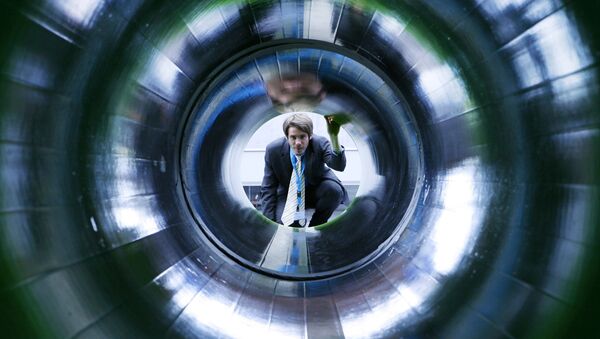The construction of Balticconnector, a 153 kilometer-long international gas pipeline crossing the Baltic Sea to link Finland and Estonia, has kicked off, the Finnish newspaper Hufvudstadsbladet reported. The project launch celebration recently took place in Inkoo, Finland.
The international pipeline project includes several parts, including a 21 kilometer land stretch between Siuntio and Inkoo, where a compressor station will be placed, and a 77 kilometer underwater stretch running from Inkoo to Paldiski, Estonia. On Estonian soil, another 55 kilometer stretch will link Balticconnector to the Baltic gas network in Kiili.
"Everything has taken place according to plans, and we've stayed true to our calculations both in terms of costs and construction time tables," Baltic Connectors project director Tom Främling said.
Despite being a joint Finnish-Estonian project, Balticconnector is mostly funded by the EU, which accounts for €190 million ($224) out of the €250 million ($295) budget. Energy security and steady supplies were named as the most important arguments in favor of building the pipeline.
READ MORE: World's Longest 'Talsinki' Tunnel Project Sees Rise of Seething Rivalry
Without significant EU support, the pipeline would not be economically viable, Främling emphasized. A connection to Estonia and thus the gas market of "mainland" Europe was said to be a welcomed complement to the pipelines coming from Russia.
Celebrating the groundbreaking of the #Balticconnector pipeline at #Inkoo #Finland
— Kalle Palling (@KallePalling) 8 июня 2018 г.
Constructing the #Balticconnector offshore pipeline is one of the key parts in linking the Finnish and Baltic gas markets and integrating them with the EU’s common energy market. #EnergyUnion pic.twitter.com/LTD0VJYMht
In 2017, natural gas accounted for roughly 4 percent of Finland's electricity and about a tenth of the Nordic country's heating. Additionally, gas is used by large industrial plants in their production. Främling said that although a future spike in gas usage is unlikely, the new pipeline will allow Finnish importers a choice of suppliers, thus balancing the prices on the Finnish market.
While the construction of Balticconnector coincides with that of Nord Stream 2, an international trans-Baltic pipeline linking Russia and Germany, Främling assured that the two companies are in constant contact with each other in order to coordinate the pipes intersecting at the bottom of the Gulf of Finland.
"Whichever company arrives second to the intersection will simply build above the other pipeline. With stone embeddings and concrete isolation, we expect a distance of half a meter to be enough to ensure that the pipes won't affect each other," Främling said.
The ceremony in Inkoo dedicated to the start of the construction featured EU Commissioner Jyrki Katainen, Finnish Environment Minister Kimmo Tiilikainen and Estonian Economy Minister Kadri Somson.
Baltic Connector yhdistää Suomen Euroopan kaasumarkkinoihin ja parantaa samalla energiaturvallisuutta. EU-rahoituksen osuus merkittävä: kolme neljännestä. @eubudget #InvestEU @jyrkikatainen @Tiilikainen @kadrisimson pic.twitter.com/H2jOB8Q1uY
— Sari Artjoki (@sariartjoki) 8 июня 2018 г.
The preparatory work is expected to be complete in 2018, allowing the pipeline to be operational by fall 2019, when commercial tests will commence.
#Balticconnector Groundbreaking Ceremony in Inkoo on 8 June 2018. Pipeline under constraction will be 153 kilometres long between Inkoo, 🇫🇮 and Paldiski, 🇪🇪. @BCOYfi @Tiilikainen @jyrkikatainen @kadrisimson @HerkkoPlit #BCceremony pic.twitter.com/T9awiXafCx
— TEM (@TEM_uutiset) 8 июня 2018 г.




